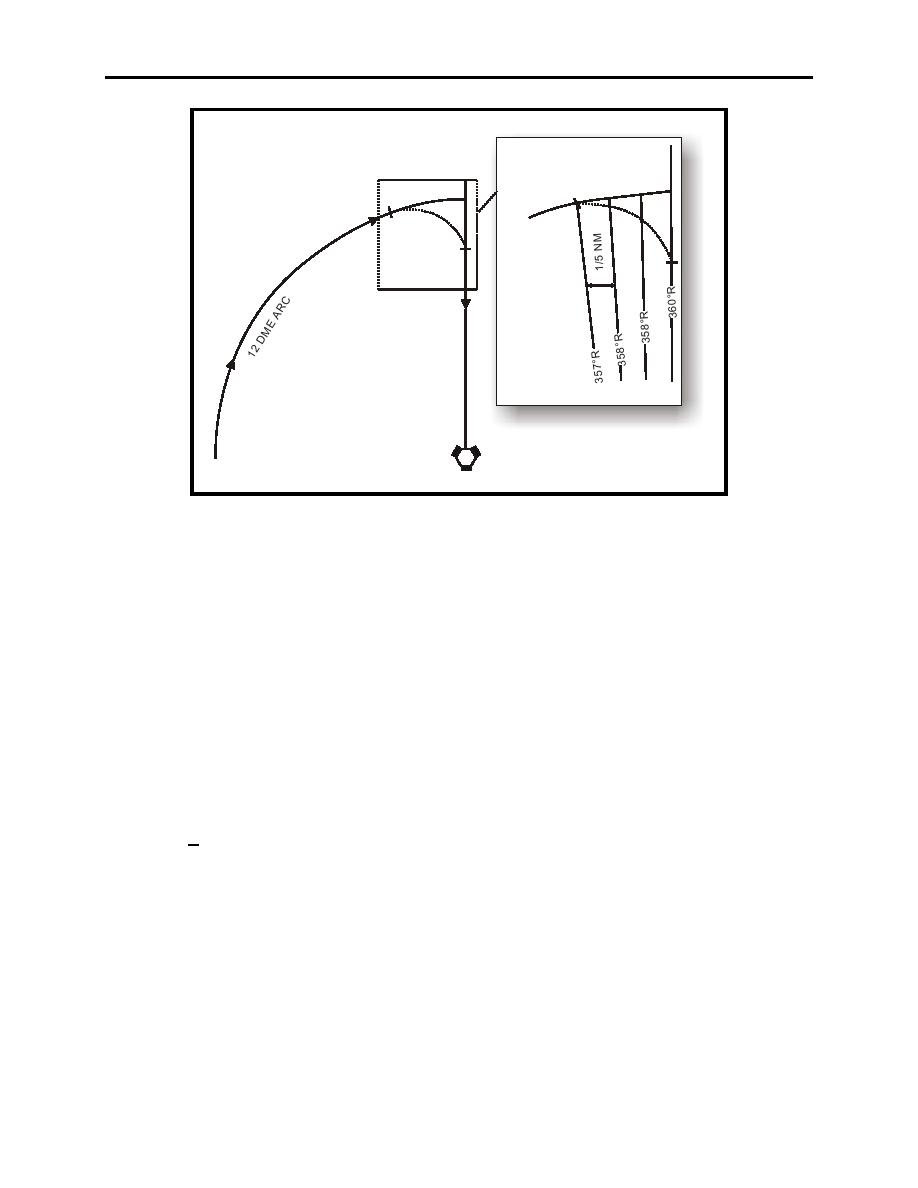 |
|||
|
|
|||
|
|
|||
| ||||||||||
|
|  T-6A INSTRUMENT NAVIGATION
CHAPTER FOUR
360R
Start Here
Start Turn Here
ME
2D
1
Roll Out on
Course Here
Figure 4-6 Maintaining Arc
MAINTAINING AN ARC
Control aircraft heading to keep the bearing pointer on or near the 90 index and the desired
range in the range indicator. Two techniques for accomplishing this are to fly a constant bank
angle or a series of short legs. For this phase of your training, you will be required to maintain
an arc by flying a series of short legs.
1. Fly a series of short, straight legs to maintain the arc. To fly an arc in this manner, adjust
the aircraft heading to place the bearing pointer 10 above the 90 index. Maintain heading until
the bearing pointer moves 10 below the 90 index. The range should decrease slightly while the
bearing pointer is above the index and increase slightly when below the index. You should
attempt to maintain the arc between 0.1 DME outside to 0.1 DME inside the arc. Based upon the
distance of the arc, the deviation about the 90 index may require less than the previously
mentioned + 10 pointer deflection in order to maintain the .1 DME arcing standard.
2. To correct to the arc, change the aircraft heading to displace the bearing pointer as desired
about the 90 index. The size of the correction must be sufficient to return the aircraft to the arc,
and is dependent upon the magnitude and rate of deviation from the arc. The rate of deviation
from or correction to an arc will vary with the size of the arc, whether the aircraft is inside or
outside the arc, TAS, and wind direction and velocity. A small arc has a relatively sharp
curvature and deviation to or from the arc can occur rapidly. Corrections from inside an arc are
assisted by the curvature of the arc. Conversely, corrections from outside the arc for a like
amount of deviation must be larger to offset the effect of arc curvature.
INSTRUMENT NAVIGATION
4-21
|
|
Privacy Statement - Press Release - Copyright Information. - Contact Us |